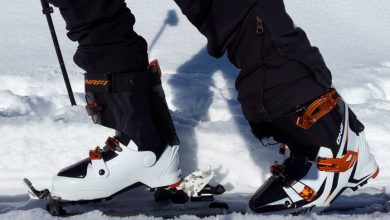Tips for healthy skin in the fall

Summer has come to an end and now we are faced with the opposite, the cold. Exposure of our skin to the sun and high temperatures have been able to take their toll on the face. It is time to focus on the care of the face, and in general of the skin , to avoid that the autumn weather continues to harm us. However, either due to these adverse conditions or due to our genetics, certain skin diseases can appear. Do you know which ones they are? How should they be treated?
Skin problems and diseases
First of all, we explain what the most common skin problems are . Some of them are produced by exposure to the sun during the summer and others can be mainly conditioned by our genetics.
MELANOMAS
Melanoma is the most dangerous type of skin cancer , since if we let it advance it can affect other organs of the body and seriously compromise our lives. However, if we detect them in time, they usually have a cure. Therefore, after the summer it must be based on an early detection as well as protect ourselves from the sun’s rays . See a specialist immediately if sun spots on the skin or moles have any or more of the following characteristics:
- They are large in size, of a brownish hue and include dark speckles.
- Their size or color have changed. Bleeding is also a red flag.
- They have irregular edges with reddish, white or bluish parts.
- They are itchy or burning.
- They are dark and are located on the palms of the hands, the soles of the feet or on the mucous membranes of the mouth, nose, genitals and perianal area.
PHOTOAGING
The photo aging of the skin consists of cutaneous modifications that can manifest itself in multiple ways:
- Yellowish discoloration
- Roughness and / or increased thickness.
- Dryness.
- Solar keratosis.
- Freckles and sun spots.
- Wrinkles
- Lack of elasticity.
- Dilation of blood vessels.
- Bruising
- Sebaceous hyperplasias.
The care of aging skin should be focused on avoiding direct sun exposure to the skin through hats, umbrellas, long-sleeved clothing and the application of sun protection, even after the arrival of low temperatures.
PSORIASIS
Psoriasis is a skin disease whose cause has a strong genetic component. When we have psoriasis, the life cycle of cells is accelerated, causing their accumulation on the surface of the skin, forming scales and red spots that can itch and even hurt. If you suffer from this problem, you can also manifest other symptoms:
- Dry skin and cracks that can lead to bleeding.
- Nails thicker than usual and / or cracked.
- Inflammation of the joints.
Managing symptoms is part of essential skin care with psoriasis.
VITILIGO
Vitiligo is a genetic skin problem characterized by the appearance of white patches of different sizes on various parts of the body. Above all, they usually appear in those that are more exposed to the sun such as the face, hands, arms and feet. Gray hair in the areas where the spots are located are also a clear sign of vitiligo.
People who suffer from vitiligo should especially protect their skin from the sun throughout the year, since, although we are not talking about a serious problem, it can more easily lead to sunburns or skin cancer.
How should skin care be?
If we want to maintain healthy skin, it is important that we follow a routine also in autumn. The sun can worsen melanomas , and all kinds of spots or skin pathologies, even in autumn, so the care of the face should be the following:
- Application of a moisturizing cream with a high protection factor , before leaving home.
- Renew it frequently if you are going to spend many hours outside.
- Avoid direct sun on your face.
- Avoid UV booths.
The skin affected by photoaging is based on the application of a hydrating dermocosmetic treatment in the morning and at night.
If your signs of photoaging are sun spots, it is recommended that you use a treatment that also includes the depigmenting function. And in any case, the moisturizer that you apply in the morning should have a high protection factor. On the other hand, avoid exposure to UVA rays.
In the case of having psoriasis , it is advisable to go to the dermatologist. With our health insurance , you will be able to access the best professionals. Usually our daily routine can include two fundamental elements:
- Topical creams : this treatment is indicated for people with mild psoriasis. They usually contain corticosteroids, so the frequency of application should be indicated by a professional.
- Medications : for example, retinoid drugs. In a treatment for more serious psoriasis that should also be indicated by a doctor.
On the other hand, if we suffer from vitiligo, the care should be similar to the case of melanoma, due to the risk of skin cancer that this problem entails. If it is marked by a professional, our routine could include corticosteroid creams.
Protect yourself from the sun, also in autumn
The sun is the trigger for many skin problems and, at the same time, it can aggravate genetic skin diseases. However, when low temperatures arrive, we can relax the protection that our dermis requires. It is essential to continue using a high protection factor in areas as exposed as the face, a habit that we should all incorporate into our facial care routine before going out, but with even more intensity if we already suffer from skin problems.




